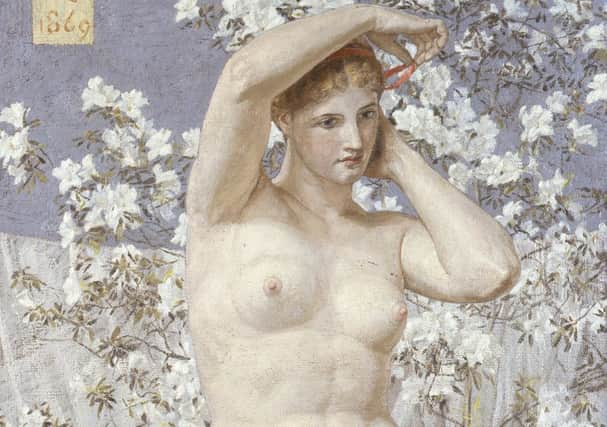Art for art's sake


The latest exhibition at York Art Gallery came about through a lovely piece of serendipity.
The show, which celebrates the work of 19th century York-born artist Albert Moore, a leading light of the Aesthetic Movement who is not as well known as he should be, is also a great example of European co-operation, as curator Laura Turner explains. “We had wanted to do an Albert Moore exhibition for some time and then it just so happened that a small museum in the Netherlands had a director who was really interested in 19th century British art. She knew about our collection of Moore here at the gallery and she contacted us to see if we would like to collaborate on an exhibition. We jumped at the chance.”
Advertisement
Hide AdAdvertisement
Hide AdThe show was at the Museum de Buitenplaats in Eelde until March and opened in York last month featuring more than thirty paintings and watercolours from galleries and private collections around the UK. It covers the range of Moore’s work throughout his life – from a Pre-Raphaelite-influenced painting made when he was just 15 to his last piece the large-scale Loves of the Wind and the Seasons – and showcases his commitment to form and aesthetics over subject matter to create ‘art for art’s sake’. It is the first time all the works have been brought together since his death.
“The main aim of the exhibition is to renew interest in the artist because I don’t think many people are aware of him and he deserves more recognition,” says Turner. “He moved to London as a teenager but his initial artist’s training had been in York and the ideas he started developing here stayed with him.”
Moore is now acknowledged as one of the forefathers of British Abstract art but his work was not fully appreciated during his lifetime as his approach was out of step with his Victorian contemporaries. The emphasis at that time was on narrative or moral significance in art which meant his work was frequently misunderstood. In a sense he was ahead of his time.
“What he was doing was so new and innovative,” says Turner. “He placed more value on the overall visual unity of the work. He just wanted his paintings to be aesthetically pleasing and I think contemporary critics found that quite difficult to grasp.”
Advertisement
Hide AdAdvertisement
Hide AdHaving received his early formal training at York School of Design, Moore’s work displays an attention to geometrical detail – another aspect of it which points to abstraction. “He followed a very complex set of design rules in his paintings,” says Turner. “They all have a grid system, so he had a mathematical approach but also his use of colour was very balanced. Tonally it was very aesthetically pleasing he used quite a tight palette of colours.”
Despite the confusion of the critics, Moore had a supportive network of patrons, many of them northern industrialists whose collections went on to form the basis of public art galleries in the North. They perhaps found some kinship in his forward-thinking. “Although he sold his work for quite a lot of money, he lived very simply,” says Turner. “He was totally committed to what he was doing.”
Albert Moore: Of Beauty and Aesthetics, York Art Gallery to October 1. The gallery is fundraising to acquire A Revery, one of Moore’s major later works, and keep it in York in perpetuity. To donate to the campaign visit www.yorkmuseumstrust.org.uk